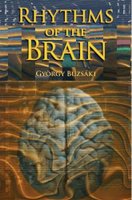Some ridicule the psychological construct of executive function (EF) for its relationship to

cognitive science's fabled "problem of the homunculus." EF is commonly considered the set of cognitive processes required to coordinate and direct behavior in a goal-directed way under conditions involving interference or otherwise requiring precise control of response. The "problem of the homunculus" is that these EF processes may appear to require their own coordination - i.e., another set of executive functions that guide the previous set of executive functions. In other words, to explain the highest workings of the mind, it appears necessary to posit another mind - a homunculus, or "little man" - that then guides the first mind, and so on, into a recursive loop of nested homunculi somewhat akin to the nesting dolls pictured above.
Some have argued that this recursive homunculus problem is more apparent than real, and that many so-called executive functions can be explained by recourse to the relatively humble and low-level processes of reward conditioning. Computational models of recurrent connectivity between the prefrontal cortex and subcortical structures involved in reward learning provide tentative support for this hypothesis.
However, a very different way of tackling the problem is far more empirical, and involves neuropsychological examination of brain-damaged patients with executive function impairments.
A
special report from the American Neuropsychiatric Association in the Journal of Neuropsychiatry and Clinical Neuroscience takes exactly this approach by analyzing "factor analyses of putative executive measures, community-based epidemiological studies [...] and placebo-controlled clinical trials with executive outcome measures."
The authors identify two themes of research into EF: the first associates EF with cognitive functions like will, abstraction and judgment, whereas the second (what they term the "cybernetic" view) associates EF with the "piloting," regulation, or control of other cognitive operations. Other research has related EF impairments to synaptic density within and/or damage to the frontal lobe, the basal ganglia, or the circuits connecting them.
Behavioral assessments of EF impairment involve an enormous variety of tasks: the Stroop task, the trail making task, the conceptualization task of the dementia rating scale, the Wisconsin Card Sort, the Executive Interview (EXIT25), the executive clock drawing task (CLOX), the frontal assessment battery (FAB), subtests of the Neuropsychiatric inventory (NPI), Behavioral Assessment of the Dysexecutive Syndrome (BADS), the Frontal Lobe Personality Scale (FLOPS), among others. The authors note that EF impariments have been observed in "almost every major neuropsychiatric disorder," perhaps as a result of the huge variety of ways in which it is evaluated, and in some cases the EF impairments seem more related to external aspects of the patients' environment (e.g., level of care) than to the degree of positive psychological symptoms.
The authors review several reasons that EF are most commonly thought to reside in the prefrontal cortex (PFC): PFC is the most highly interconnected brain region; one PFC region of particular interest (broadman's area 46, roughly equivalent to dorsolateral prefrontal cortex) is particularly rich in inhibitory interneurons (involved in schizophrenia and neurolepsy); PFC receives input only from regions that themselves process information in a variety of sensori-motor domains; neural activity in PFC is modulated by the motivational value of stimuli; impairments in EF tasks can be observed by lesioning the PFC or thalamic/basal ganglia regions that project to it. The authors conclude that "the frontal lobe is the only cortical region capable of integrating motivational, mnemonic, emotional, somatosensory, and external sensory information into unified, goal-directed action.
The authors identify three subregions of PFC that are particularly important for EF:
- dorsolateral prefrontal cortex (DLPFC, BA's 8-12, 46 & 47): involved in "hypothesis generation, behavioral control," "goal selection, planning, sequencing, response set formation, set shifting, verbal and spatial working memory, self-monitoring, and self-awareness," and consistently activated by the WCST (though comprehension and visual search skills need to be controlled first)
- orbitofrontal cortex (aka vmPFC, BA's 10-15 & 47): involved in "initiation of social and internally driven behaviors and the inhibition of inappropriate behavioral responses," risk assessment, and reward prediction. Lesions to this region produce impairments on go/no-go tasks, "insight, judgment and impulse control" as well as "environmental dependency and utilization behavior [in which subjects impulsively, spontaneously, and uncontrollably use objects they find in familiar ways, without regard to the contextual appropriateness of such behavior]."
- anterior cingulate (ACC, BA medial 9-13, 24 & 32): involved in conflict monitoring, "monitoring behavior and error correction," and ACC integrity is well indexed by EXIT25 assessment. Activation of ACC is reliably induced by the Stroop task although variance ACC activity does not completely explain Stroop performance.
Hopefully the above has given you an idea of how complex this "region" (or set of regions) truly is. After reading this, it is perhaps not surprising that neuropsychology and neuropsychiatry have not been able to establish a "gold standard" for EF assessment. The authors suggest this difficulty can be traced to four unresolved problems in current understanding of the neural bases of executive function. They discuss each of these at length; I will summarize each in turn.
Problem #1: Frontal Lobe vs Frontal System
The authors suggest that clinical assessment of EF impairment has been so confused partly because there is no established list of what the primary executive functions
actually are, and that this is compounded by difficulty in estbalishing anatomical boundaries between prefrontal regions (which as you may have noticed above, do not cleanly fall within cytoarchitectonic distinctions laid out by Broadman). Furthermore, PFC lesions are frequently quite messy, involving damage to multiple PFC as well as subcortical regions, and follow-up studies of these patients are typically both short and rather superficial.
Problem #2: Structure vs Function
Related to the above problem, damage to various remote regions of cortex can indirectly affect prefrontal processing. EF is highly sensitive to frontal metabolism; for example, increases in PFC metabolism have been related to obsessive-compulsive disorder, whereas decreases in PFC metabolism have been related to parkinson's, major depression, and schizophrenia.
Problem #3: Control vs. ProcessThe authors suggest that questions about EF impairment often take the form of "how" or "whether" a patient can do something, whereas non-executive cognitive tasks typically investigate "how much" or "how well" a patient can do something. The distinction between these is the integrity of a process (measured by "how well" the patient can copy a drawing, for example) vs. the integrity of control ("whether" a patient can copy a drawing from memory).
Problem #4: Are EF's Unitary or Multiple?
Although terms like "central executive" seem to imply that there is but one executive function, the frontal lobes do seem to follow a few spatially-organized principles, which the authors describe as follows: "left–verbal/right–nonverbal, anterior–cognitive/posterior–motor, ventral–perception/dorsal–action, and medial–internal focus/lateral–external focus." (The authors later note that a different dorsal/ventral distinction seems to apply within medial cortex, such that dorsal areas are more purely cognitive whereas ventral areas are related to more emotional processing). As the authors note, however, this spatial organization could simply reflect PFC performing the
same executive function on a variety of
different inputs.
On the other hand, the authors note that several studies find multiple dimensions of EF, falling out roughly as follows:
rule discovery as tapped by WCST (with lesion studies suggesting dlPFC involvement),
working memory as tapped by digit span and tower of london (also tied to dlPFC),
attentional control as measured by continuous performance tasks (with lesion studies suggesting mesiofrontal involvement), and
response inhibition factors as measured by Stroop (lesion studies suggest orbitofrontal involvement). Thankfully the authors admit that no task is process pure, and that factor analytic studies suggest the involvement of multiple EF functions in each of these tasks.
However, if more process-pure measurements could be developed, the field of neuropsychological assessment could clearly benefit. Disability and outcome predictions could be made more reliable across a wide range of disorders; treatment options could be better specified for various disorders; and an enormous number of people would be affected. This latter point is made clear by two recent studies - each involving more than 1,000 subjects - that showed over 25% of elderly adults manifest EF impairment. Aging is associated with decreased adrenergic and dopaminergic activity in PFC, which is in turn correlated with decreased frontal metabolism as well as decreased performance on Stroop and WCST.
Of course, there are even more clear markers of EF impairment in populations already diagnosed with specific disorders. For example, major depression shows reduced frontal metabolism and decreases in behavioral indexes of EF, which increase after the alleviation of symptoms.
In the case of schizophrenia, vlPFC and vmPFC regions diminish in gray and white-matter volume, and the former is correlated with negative symptoms like apathy, ahedonia, loss of motivation, etc. dlPFC show less regional blood flow and metabolic activity. Astonishingly, some estimate that the percentage of schizophrenics with executive impairments is the same as the percentage of ostensibly "healthy" elderly adults, and that the severity is similar as well. Note that this similarity remains after controlling for level of elderly care (e.g., use of assistive devices such as prosthetics) which is also strongly correlated with elderly EF performance.
In structural brain diseases such as Alzheimer's, frontal lobe pathology is a better predictor of dementia than atrophy in other brain regions, and correlates strongly with behavioral EF impairment. Vascular dementia shows a similar pattern. Diabetes mellitus also shows impairments on behavioral indices of EF.
There are pharmocological implications as well. For example, the use of atypical antipsychotics (i.e., not haloperidol) in schizophrenics has demonstrated that some agents seem to selectively improve executive function. Risperidone increases EF performance on the trail making test among schizophrenics, relative to haloperidol. Improvements in EF may ultimately be more important in the functional outcomes of schizophrenia treatment than the reduction of schizophrenia's positive symptoms.
Based on this rather messy picture of the role of EF in clinical and elderly patients, the authors conclude that more research is needed into the components of EF, perhaps by associating latent EF factors with distributed neural networks identified through fMRI. Additionally, measures of EF should be included in both normal behavioral assessment, in pharmacological trials, and in studies of genetic and environmental contributions to behavior.
 Right inferior frontal cortex (rIFC) is thought by some to implement "inhibition" of motor responses when they must be abruptly stopped (as in the Stop Signal paradigm). It is still unclear how rIFC might actually accomplish this, and even if it does that in the first place. Nonetheless, this paper from the Journal of Neuroscience makes great strides in establishing the neural mechanisms of response inhibition.
Right inferior frontal cortex (rIFC) is thought by some to implement "inhibition" of motor responses when they must be abruptly stopped (as in the Stop Signal paradigm). It is still unclear how rIFC might actually accomplish this, and even if it does that in the first place. Nonetheless, this paper from the Journal of Neuroscience makes great strides in establishing the neural mechanisms of response inhibition. The term "executive function" is frequently used but infrequently defined. In attempting to experimentally define executive functions in terms of their relationship to age, reasoning and perceptual speed, Timothy Salthouse reviewed the variety of verbal definitions given to construct of "executive function." Although these differ in terminology and emphasis, they are clearly addressing a similar concept:
The term "executive function" is frequently used but infrequently defined. In attempting to experimentally define executive functions in terms of their relationship to age, reasoning and perceptual speed, Timothy Salthouse reviewed the variety of verbal definitions given to construct of "executive function." Although these differ in terminology and emphasis, they are clearly addressing a similar concept: Arthur Jensen is a controversial figure in psychology, due in large part to his claims about racial differences in intelligence. In his newest book, "Clocking the Mind," Jensen turns his attention to a more focused topic: how is it that extraordinarily simple measures of reaction time can correlate so highly with intelligence?
Arthur Jensen is a controversial figure in psychology, due in large part to his claims about racial differences in intelligence. In his newest book, "Clocking the Mind," Jensen turns his attention to a more focused topic: how is it that extraordinarily simple measures of reaction time can correlate so highly with intelligence? Some highlights from recent brain blogging:
Some highlights from recent brain blogging: The ancient proverb "the eyes are the window to the soul" may in some ways be validated by cognitive neuroscience. Pupil diameter is gaining currency as an index of mental effort ("cognitive workload") as well as arousal. In the most compelling finding from this literature, pupil diameter has been observed to increase with each successive item maintained in memory, up until each subject's working memory capacity - and then to contract incrementally as each item is reported back to the experimenter. Some recent work suggests that spontaneous eye blink rate - how quickly the eyes blink in normal, everyday situations - may also be an index of prefrontal or executive processes.
The ancient proverb "the eyes are the window to the soul" may in some ways be validated by cognitive neuroscience. Pupil diameter is gaining currency as an index of mental effort ("cognitive workload") as well as arousal. In the most compelling finding from this literature, pupil diameter has been observed to increase with each successive item maintained in memory, up until each subject's working memory capacity - and then to contract incrementally as each item is reported back to the experimenter. Some recent work suggests that spontaneous eye blink rate - how quickly the eyes blink in normal, everyday situations - may also be an index of prefrontal or executive processes. Basic science has always had military applications, but only relatively recently has the defense industry actively funded and solicited scientists to optimize war. In "Mind Wars," Jonathan Moreno analyzes the military's intense interest in modern neuroscience from historical, scientific, and ethical perspectives.
Basic science has always had military applications, but only relatively recently has the defense industry actively funded and solicited scientists to optimize war. In "Mind Wars," Jonathan Moreno analyzes the military's intense interest in modern neuroscience from historical, scientific, and ethical perspectives. A good popular science book will provide laypeople with an exciting perspective on the state of the art in a particular field. But this comes at a price: typically such books are written from just a single theoretical perspective, glazing over or altogether ignoring details that might be considered controversial within the academic community. To understand these deeper issues, an interested layperson would have to trudge through academic textbooks, or for the most cutting-edge topics, delve into the often impenetrable peer-reviewed literature.
A good popular science book will provide laypeople with an exciting perspective on the state of the art in a particular field. But this comes at a price: typically such books are written from just a single theoretical perspective, glazing over or altogether ignoring details that might be considered controversial within the academic community. To understand these deeper issues, an interested layperson would have to trudge through academic textbooks, or for the most cutting-edge topics, delve into the often impenetrable peer-reviewed literature.